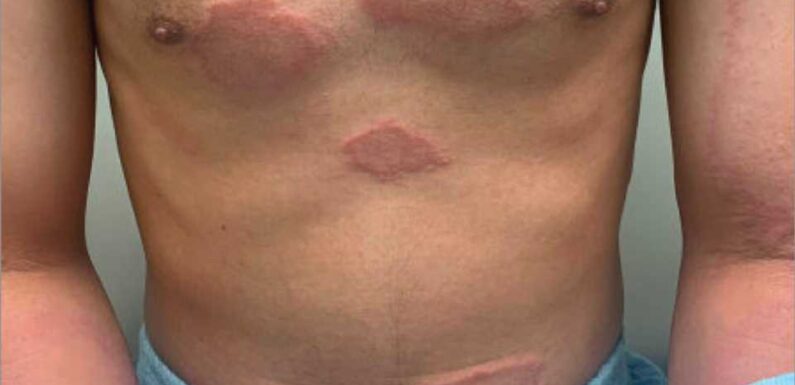
A MAN’s mysterious ring-shaped rash turned out to be leprosy, scientists have revealed.
The man in his 20s, from Texas, was struck down by the killer medieval disease — which also made his fingers bend into a claw.
Initial tests could not show what was wrong with him when he went to a dermatologist, after suffering numbness and tingling in the patches on his skin for three months.
But after sending a sample of his skin to a specialist laboratory, results showed he had leprosy.
Dr Aidan Filley, of Texas A&M University, said: “Early diagnosis and treatment are important to decrease disability and adverse psychosocial effects of leprosy and to reduce the risk of transmission.”
Leprosy, also known as Hansen’s disease, is caused by a type of bacteria called Mycobacterium leprae.
Read more on health
How gruesome ancient diseases like Black Death & polio are coming back to life
Leprosy discovered in wild chimps for 1st time, as apes pictured with lumps
The condition is all but non-existent in Britain in the modern day, with just five new cases spotted a year since 2015.
However, it is still endemic in parts of the world, with around 200,000 people around the globe diagnosed annually.
The World Health Organization is working to completely eliminate the disease and in 2019, 45 countries reported no new cases.
It is usually spread by droplets from the mouth but can also be passed on from prolonged skin-to-skin contact or from contamination with tattooing.
Most read in Health
8 hacks to stop hiccups FAST – from sticking your tongue out to sucking lemons
My parents blamed my bad 'hangover' on being spiked – I was having a stroke
The 3 easy ways to beat 'chicken skin' & how it can be a sign of serious illness
Shocking five-figure calorie amount Brits consume on holidays revealed
Symptoms can take years to develop but if left untreated it can lead to nerve damage, blindness and death.
In medieval times, patients were often ostracised from society because of fears about its infectiousness, but it is now curable with modern medicine.
The man from Texas’ case was first reported in JAMA Clinical Challenge.
He was heavily tattooed and moved to the US from Samoa — where leprosy is still endemic — four years before he was diagnosed.
Medics put him on a course of antibiotics recommended by the WHO for treating leprosy and his symptoms improved after two months.
He had surgery on his tendons and occupational therapy to help return movement to his hand and was still undergoing antibiotics after a year.
Source: Read Full Article







